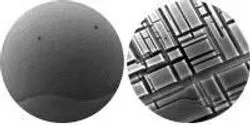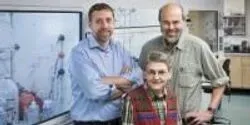News

Rust never sleeps. Whether a reference to the 1979 Neil Young album or a product designed to protect metal surfaces, the phrase invokes the idea that corrosion from oxidation—the more general chemical name for rust and other reactions of metal with oxygen—is an inevitable, persistent process. But a new study performed at the Center for Functional Nanomaterials (CFN) at the U.S. Department of Energy's (DOE) Brookhaven National Laboratory reveals that certain features of metal surfaces can stop the process of oxidation in its tracks.

Researchers at the University of California, Davis, will explore ways to speed production of the Ebola drug Zmapp with a $200,000 rapid-response grant from the National Science Foundation.

The world owes a debt of gratitude to Simon Fraser University (SFU) biologist Regine Gries. Her arms have provided a blood meal for more than a thousand bedbugs each week for five years while she and her husband, biology professor Gerhard Gries, searched for a way to conquer the global bedbug epidemic.

Scientists at the University of Cambridge working with the Weizmann Institute have created primordial germ cells – cells that will go on to become egg and sperm – using human embryonic stem cells. Although this had already been done using rodent stem cells, the study, published Dec. 24 in the journal Cell, is the first time this has been achieved efficiently using human stem cells.

Open any introductory biology textbook and one of the first things you’ll learn is that our DNA spells out the instructions for making proteins, tiny machines that do much of the work in our body’s cells. Results from a study published on Jan. 2 in Science defy textbook science, showing for the first time that the building blocks of a protein, called amino acids, can be assembled without blueprints – DNA and an intermediate template called messenger RNA (mRNA). A team of researchers has observed a case in which another protein specifies which amino acids are added.

Instead of an apple, could a hug-a-day keep the doctor away? According to new research from Carnegie Mellon University, that may not be that far-fetched of an idea.

Innovative optical fiber developed by researchers from Clemson University, the University of Wisconsin-Milwaukee, the University of New Mexico and Corning Incorporated was chosen as one of Physics World’s Top Ten Breakthroughs of 2014.

Women exposed to high levels of fine particulate matter specifically during pregnancy—particularly during the third trimester—may face up to twice the risk of having a child with autism than mothers living in areas with low particulate matter, according to a new study from Harvard School of Public Health (HSPH). The greater the exposure, the greater the risk, researchers found. It was the first U.S.-wide study exploring the link between airborne particulate matter and autism.













